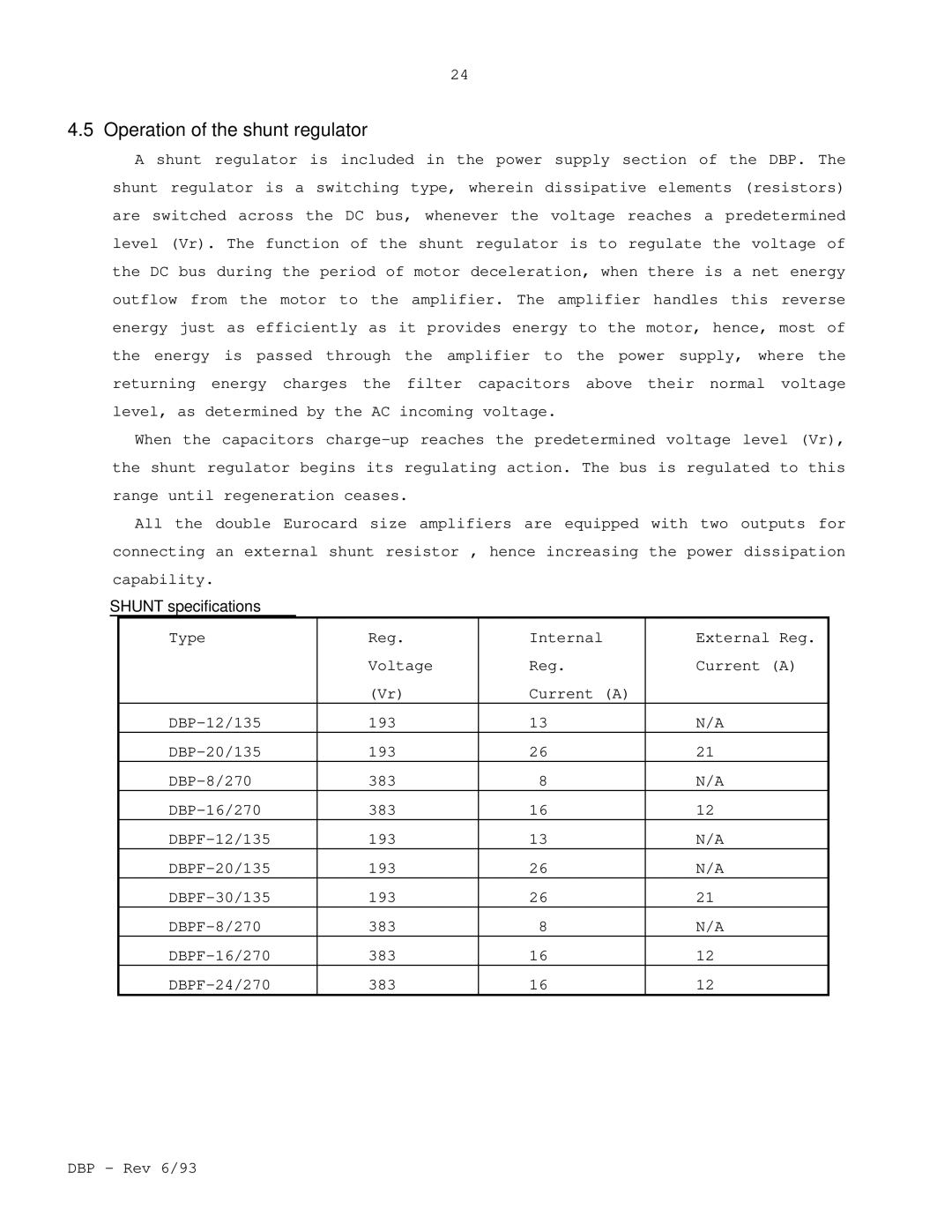24
4.5 Operation of the shunt regulator
A shunt regulator is included in the power supply section of the DBP. The shunt regulator is a switching type, wherein dissipative elements (resistors) are switched across the DC bus, whenever the voltage reaches a predetermined level (Vr). The function of the shunt regulator is to regulate the voltage of the DC bus during the period of motor deceleration, when there is a net energy outflow from the motor to the amplifier. The amplifier handles this reverse energy just as efficiently as it provides energy to the motor, hence, most of the energy is passed through the amplifier to the power supply, where the returning energy charges the filter capacitors above their normal voltage level, as determined by the AC incoming voltage.
When the capacitors
All the double Eurocard size amplifiers are equipped with two outputs for connecting an external shunt resistor , hence increasing the power dissipation capability.
SHUNT specifications
| Type | Reg. | Internal | External Reg. | |
|
|
| Voltage | Reg. | Current (A) |
|
|
| (Vr) | Current (A) |
|
| 193 | 13 | N/A | ||
| 193 | 26 | 21 | ||
| 383 | 8 | N/A | ||
| 383 | 16 | 12 | ||
| 193 | 13 | N/A | ||
| 193 | 26 | N/A | ||
| 193 | 26 | 21 | ||
| 383 | 8 | N/A | ||
| 383 | 16 | 12 | ||
| 383 | 16 | 12 | ||
DBP - Rev 6/93
